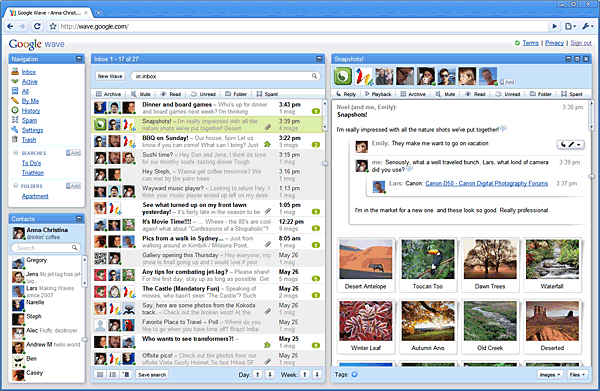When I set out to chronicle the rise of blogging in book form, I knew there was no way my work could hope to be comprehensive. This story simply has too many strands and facets. The ones I chose to focus on are, I believe, among the most significant. But there are many other legitimate and valuable ways to approach the subject. Here are two examples.
(1) A couple days ago I finished reading Eric Boehlert’s new book, Bloggers on the Bus: How the Internet Changed Politics and the Press. Eric and I were colleagues at Salon for years, but I hadn’t known that he was working on this subject as I worked on Say Everything. When I ordered the book I worried a bit, as authors will, that there might be a lot of overlap between Boehlert’s account of the rise of the political blogosphere and my own.
It turns out the books are highly complementary. Say Everything uses the story of Josh Marshall’s evolution as a blogger-journalist as a thread to follow the larger tale of the rise of the political blogosphere, as blogging leaped from the tech world to the political realm in the aftermath of 9/11. Bloggers on the Bus is more of a group biography of the progressive blogging universe, concentrating on its role in the 2008 election cycle.
Boehlert’s book is full of vivid anecdotes and thoroughly reported portraits of bloggers on the left. I recommend it for anyone who wants a deeper understanding of how blogging and new-media organizing set the stage for Obama’s victory — as well as for readers of Say Everything who want a more detailed account of the people and events that shaped today’s blue-state blogging world.
(2) On Friday, thanks to Dave Winer’s post and tweet about it, I came across a new paper by Rudolf Ammann, a scholar in London who is studying the roots of blogging. Its title is “Jorn Barger, the NewsPage Network, and the Emergence of the Weblog Community,” and it’s an unusually thorough and careful attempt to exhume the details of the process by which the pre-Blogger-era blogosphere (circa first half of 1999) emerged from one of its roots– the users of Dave Winer’s NewsPage Suite software beginning in 1997. Ammann’s thesis is that the NewsPage users never really coalesced into a community until Jorn Barger, of Robot Wisdom WebLog fame, set out to organize them as such.
As befits a work of scholarship as opposed to popular journalism, Ammann’s paper pursues this subject far deeper into the weeds than I do in Say Everything. Where I focused my effort to understand Barger by reading his writing on artificial intelligence, Ammann spent his time digging into the Usenet archive of the alt.hypertext group, and came up with some good stuff.
I have a number of thoughts and comments on the paper that I’m going to reserve till I’ve had a chance to reread it carefully. But my initial take is that, as with Bloggers on the Bus, it provides a valuable complement to my book — filling in some details I left out and offering an alternative angle on some tales I did cover.
The history of blogging turns out to be an even bigger subject than I expected. It’s good to have company here!


